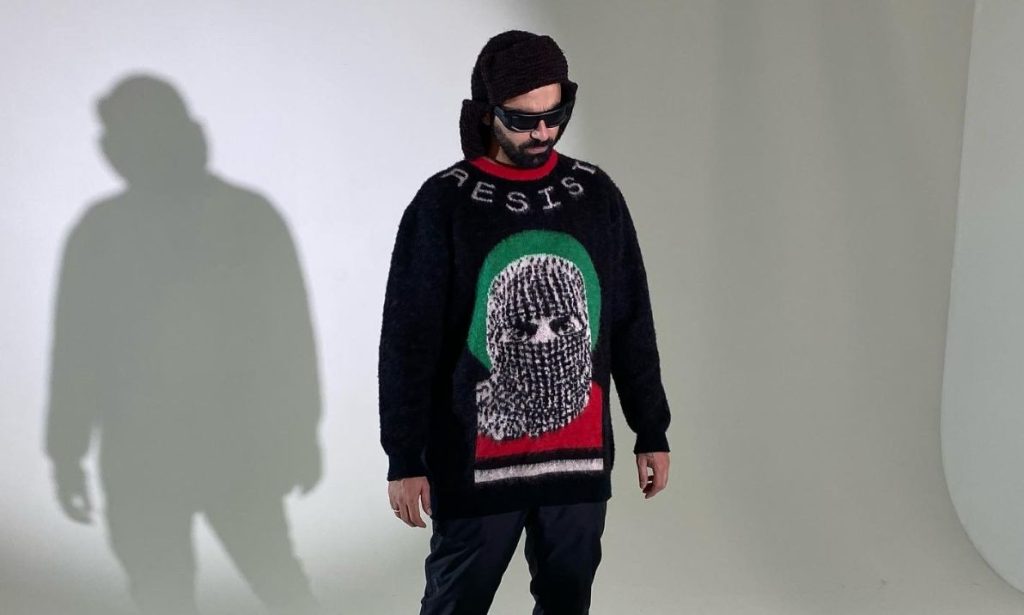In late 2023, Jordanian-Palestinian artist and rapper ‘Emsallam’ released a lyrical commentary on the situation in Gaza titled ‘Bedayat Al Nehaya,’ produced by Ramez Naguib.
At one level, the track does not only match but possibly even surpasses the peaks of Emsallam’s career as a rapper and a multitalented artist; on another level, it entices listeners and watcher of the Palestinian resistance through a profound mingling of charged up lyrics with a familiar daf beat.
Gaza is Bedayat Al Nehaya
The song is charged with the artist’s essential belief that Palestinian resistance is to take the upper hand above all. In Scoop’s one-on-one with the artist, he said, “I think Gaza is stronger than the Israeli occupation, and I wanted to capture this feeling in my song.”
“We are strong, and yes, Gaza 2023 is the beginning of the end of the occupation. The resilience of my people in Gaza is otherworldly and Gazans are teaching the world liberty while under siege,” he continued after admitting that he wasn’t able to write anything but lyrics in tune with the real situation.
The beat came first, and then the lyrics. Ramez Naguib, the mind behind the familiar daf-dominated beat of Bedayat Al Nehaya, was picked by Emsallam, among others, because it reminds him of Palestinian folk songs that he “grew up hearing in weddings in Amman by grandma and aunties.”
Making a Political Statement Through Fashion
In the music video, directed by Abedeljabbar Zaytoon, Emsallam impressed us with two clothing items that caught our attention. The first is a wool sweater featuring the resistance icon and spokesman of Al Qassam ‘Abu Obaida,’ and the second is a button-up print shirt with the Jerusalem skyline. He made them both.
The rapper and painter, who took the “five-mark tallies” as his trademark, reveals to us how he experimented with fashion in Bedayat Al Nehaya, predicting an authentic delve into the fashion world.
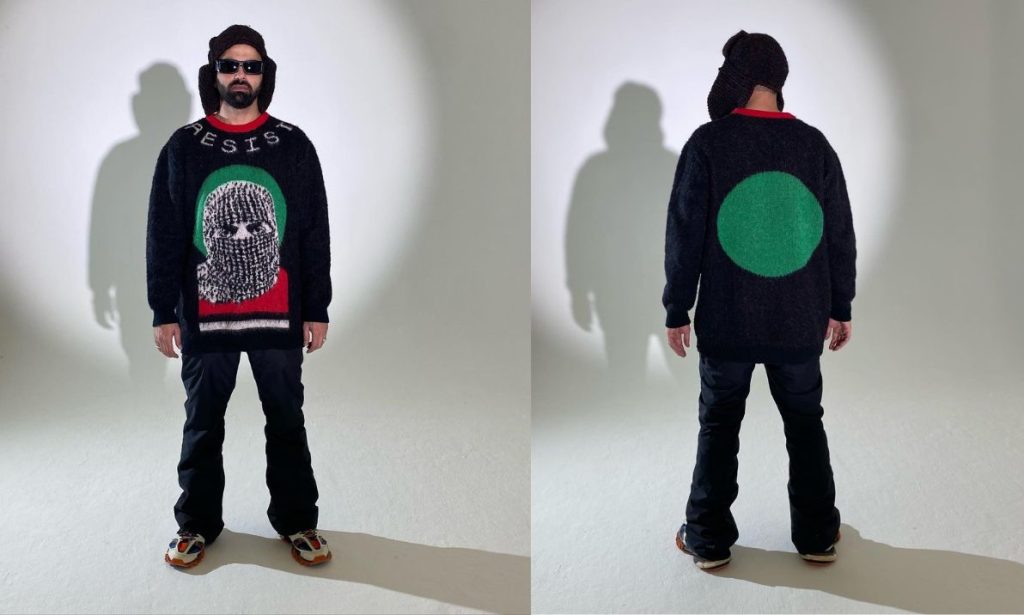
“Lately I’m involved in fashion… The Resist wool sweater I wore is an original design I made at the beginning of the war. I wanted to experiment with different materials. Usually Arab artist merch is all about silkscreen printed T-shirts. I don’t like that. We have so many other things to offer in the fashion world,” said Emsallam.
According to him, the conscious choice of mohair fabric was to signify the warmth that only the spirit of resistance can grant the oppressed. The other blueprint shirt featuring the Jerusalem skyline was designed last year when he first picked up an interest in fashion.”
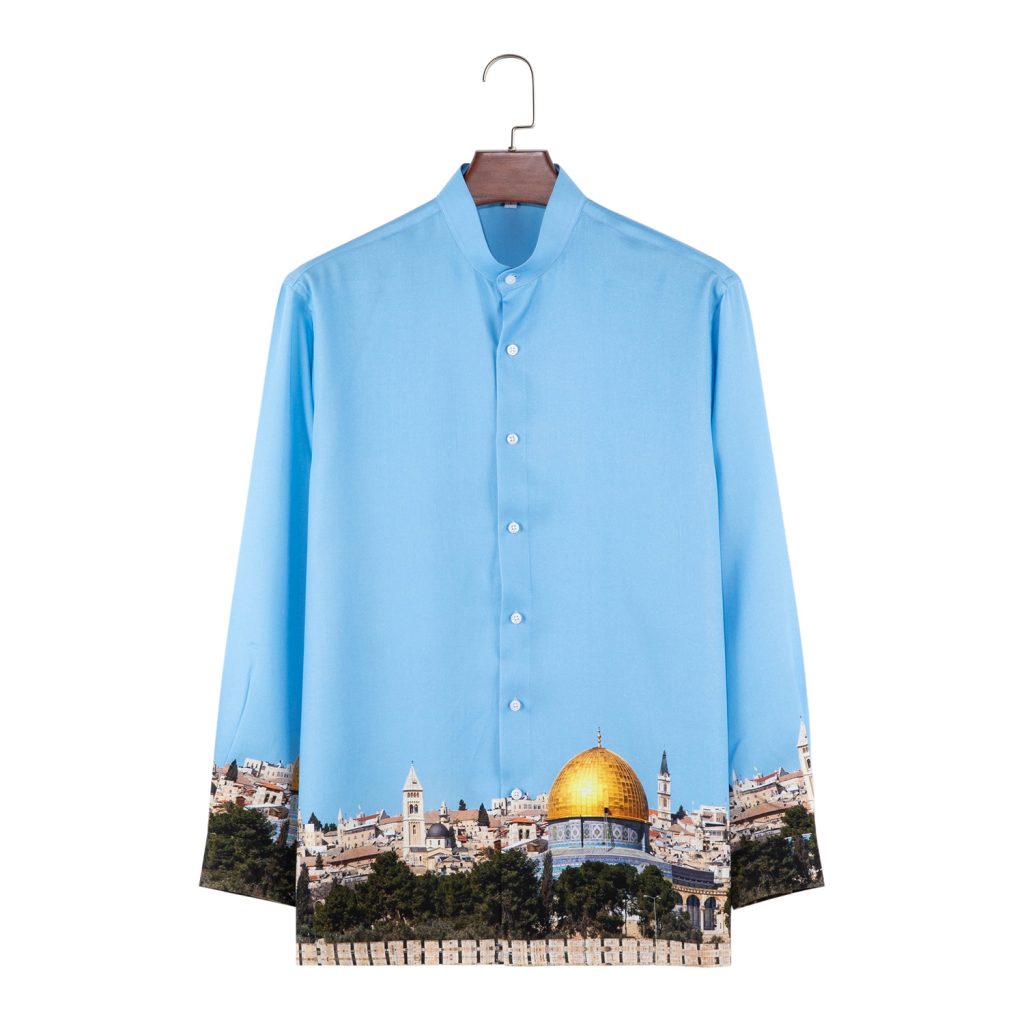
“The inspection about it is a weird one…when the Israeli minister of culture wore the dress that had the photo of Jerusalem in Cannes festival 2017, that act was too hostile, and I wanted to respond…showing off this shirt in the context of the ‘Aqsa Flood’ is perfect timing.”
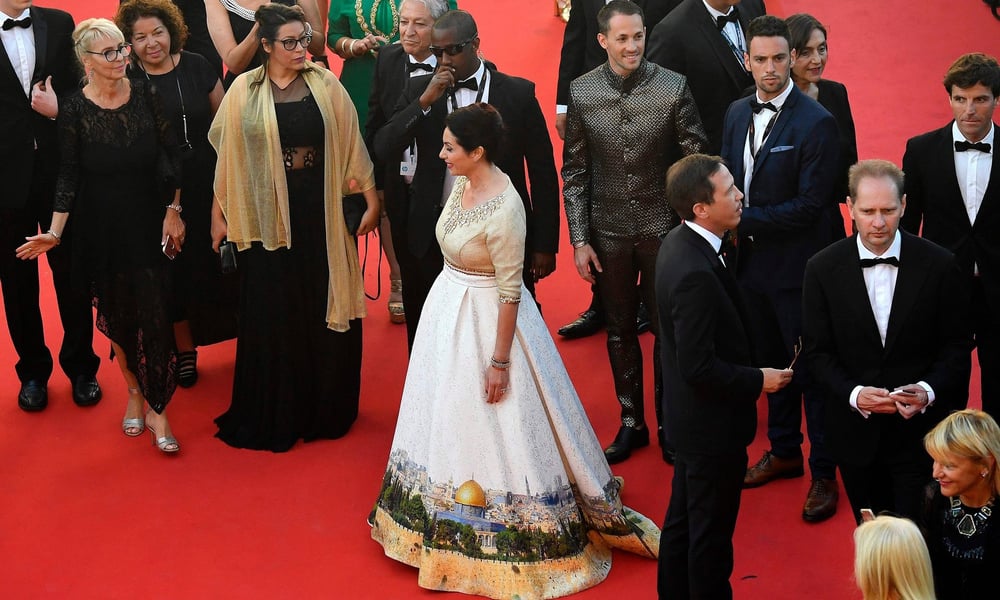
Not Afraid to Speak Up
The linguistic decision to include Hebrew subtitles in the music video came last minute, yet, when asked about it, Emsallam revealed the intention behind it:
“For the big part, it’s an artistic decision…However, of course, I wanted the song to reach the Israelis, and most importantly…I wanted to tell my beloved people inside the 48 line that they are not alone, and if they can’t talk, then someone [else] can.”
Unlike several Arab artists who try to deal with such a sensitive socio-political issue by staying neutral, the Jordanian-Palestinian artist is unapologetically pro-resistance.
Emsallam said “Not everyone in the music scene can say this in fear of losing bookings and opportunities. For me, this is not an option; that’s why I started the song by saying that my big dreams are dead now.”
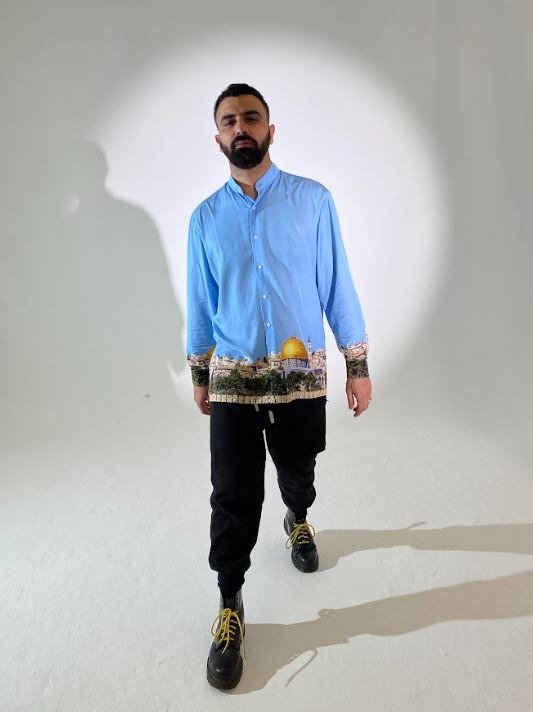
In a final note from the artist, he shared that he’s working on exciting projects for 2024. He also added that more authentic fashion designs are expected to be seen, confirming that fashion is going to be “a thing [for him] from this point on.”
WE SAID THIS: Don’t Miss...Egypt’s Rapper Abyusif To Perform His First London Show This Februarys


